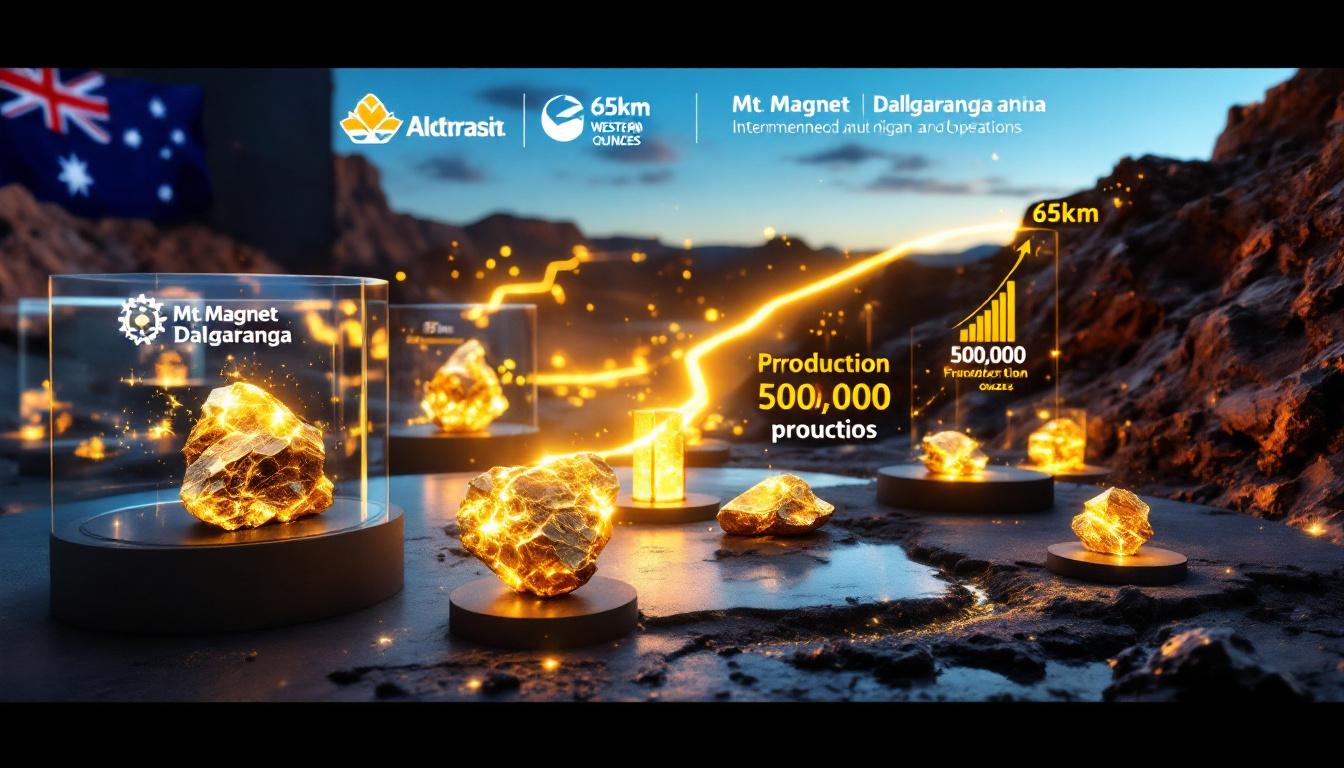Shanghai Zinc Futures Market: Strength Amidst Changing Dynamics
The Shanghai zinc futures market demonstrates remarkable resilience in mid-2025, with prices holding firm despite evolving market conditions. This strength in the futures segment creates fascinating ripple effects throughout the zinc supply chain, particularly influencing premium rates and trading behaviors across the ecosystem.
What's Happening in the Shanghai Zinc Futures Market?
The Shanghai zinc futures market is currently experiencing a notable dichotomy between robust futures prices and declining spot premiums. According to the latest SMM (Shanghai Metals Market) Midday Review from June 27, 2025, futures contracts continue to display significant strength despite broader market volatility hedging uncertainties.
Current Price Ranges and Market Dynamics
In the Shanghai market, zinc prices demonstrate clear stratification based on grade and brand quality:
- 0# Zinc: Trading between ¥22,520-22,695 per metric ton
- Shuangyan Zinc: Trading between ¥22,650-22,865 per metric ton (commanding premium pricing)
- 1# Zinc: Trading between ¥22,450-22,625 per metric ton
This price differentiation reflects the premium quality aspects of brands like Shuangyan, which consistently trades at the upper end of the market spectrum due to its superior purity and processing standards.
Premium Structure Evolution
Premium structures have evolved significantly through recent trading sessions:
- Morning session premiums: ¥0-30 against average price
- Second trading session premiums (against 2507 contract):
- Ordinary domestic zinc: ¥40 premium
- Silver-grade zinc: ¥90 premium
- Huize brand: ¥170 premium
- Shuangyan (high-price brand): ¥220 premium
The 2507 futures contract (July 2025 expiry) serves as the benchmark for these premium calculations due to its high liquidity and alignment with physical delivery cycles. This contract has become the standard reference point for spot market transactions in the Shanghai zinc ecosystem.
Market Insight: The significant premium disparity between ordinary domestic zinc (¥40) and high-quality Shuangyan (¥220) highlights the substantial value differentiation in the zinc market based on purity levels and processing quality.
How Are Futures Affecting Spot Market Behavior?
Inverse Relationship Between Futures and Premiums
A fascinating market paradox is currently unfolding in the Shanghai zinc futures market. While futures prices remain robust, spot market premiums are experiencing significant downward pressure—falling to just ¥0-30 per metric ton in morning trading sessions.
This inverse relationship exemplifies the complex interplay between derivatives and physical markets. As futures strengthen, they create a ceiling effect on premiums by establishing clear forward price expectations and limiting arbitrage opportunities.
Factors Driving Premium Reduction
Several key factors are contributing to the compression of spot market premiums:
- Strong futures market performance: The sustained strength in futures contracts has created a cost-of-carry squeeze, making spot hoarding less economically viable
- Dampened downstream buying sentiment: Higher futures prices are actively discouraging bulk purchases as buyers fear potential price reversals
- Need-based purchasing patterns: SMM reports that buyers are limiting orders strictly to immediate requirements, avoiding inventory accumulation
- Reduced arbitrage incentives: The narrowing gap between futures and spot prices has eliminated many traditional trading opportunities
Trading Volume Implications
The current market dynamics have had profound effects on trading volume and liquidity:
- Sluggish spot market activity: Despite price strength, actual transaction volumes remain significantly constrained
- Immediate-need driven purchases: Downstream buyers are adopting cautious, just-in-time procurement strategies to minimize price risk exposure
- Reduced speculative buying: Market participants are showing noticeable hesitancy to build inventory positions, further constraining market liquidity
This behavior pattern suggests market participants may be anticipating potential price corrections or are responding to broader economic uncertainties affecting zinc-consuming industries.
What Are the Broader Market Indicators for Zinc?
Supply-Side Considerations
Understanding the broader zinc market requires examination of key supply-side metrics:
- Production capacity utilization: Chinese zinc smelters have been operating at approximately 83-87% capacity in Q2 2025, according to industry estimates
- Inventory positions: Shanghai Futures Exchange (SHFE) zinc stocks stood at 133,412 metric tons as of late June 2025, representing a 7.3% decrease month-over-month
- Import/export dynamics: Chinese zinc concentrate imports rose 12% year-over-year in H1 2025, while refined zinc exports decreased by 3.2% over the same period
These supply indicators suggest relatively tight refined zinc availability despite adequate concentrate supply chains—a factor supporting the current futures market strength.
Demand-Side Factors
Demand dynamics play an equally crucial role in the zinc market equilibrium:
- Downstream industry activity: The construction sector, which accounts for approximately 50% of zinc consumption in China, has shown signs of stabilization after policy support measures
- Galvanizing sector performance: Operating rates at major galvanizing plants averaged 72% in June 2025, down from 78% in the same period last year
- Seasonal consumption patterns: The traditional summer lull in construction and manufacturing activity has temporarily suppressed zinc demand, with expectations for recovery in September-October
Industry Insight: "The zinc market is experiencing the typical summer demand softness, but the resilience in futures prices suggests traders are positioning for a stronger Q4 consumption recovery, particularly if government infrastructure initiatives accelerate as anticipated." — Shanghai Metals Market Analysis, June 2025
How Does the Shanghai Zinc Market Compare to Other Metals?
Cross-Metal Market Correlations
The zinc market's current dynamics don't exist in isolation. Examining correlations with other metals reveals important interconnections:
- Copper market dynamics: Like zinc, copper price prediction has demonstrated strength while physical premiums face pressure, indicating similar market psychology across base metals
- Steel market conditions: Seasonal weakness in steel demand mirrors patterns in zinc consumption, with both markets showing heightened sensitivity to construction sector activity
- Aluminum relationship: Zinc has maintained a 0.72 correlation with aluminum prices over the past 90 days, reflecting shared exposure to energy cost pressures and overlapping end-use industries
These cross-metal relationships provide valuable context for understanding zinc's position within the broader metals complex.
Comparative Price Performance
| Metal | Recent Price Trend | Premium Dynamics | Trading Volume | Inventory Trend | Policy Sensitivity |
|---|---|---|---|---|---|
| Zinc | Strengthening futures | Declining premiums | Sluggish spot activity | Gradually decreasing | Moderate |
| Copper | Rising prices | Consumption constraints | Unoptimistic outlook | Steady decline | High |
| Aluminum | Range-bound | Stable premiums | Moderate activity | Increasing | Low |
| Steel | Seasonal weakness | Supply-demand imbalance | Accumulating contradictions | Building stocks | Very high |
This comparative analysis highlights zinc's relatively favorable position among industrial metals, with declining inventories supporting price resilience despite seasonal demand challenges.
What's the Outlook for Shanghai Zinc Futures?
Short-Term Projections
The immediate outlook for Shanghai zinc futures hinges on several key factors:
- Premium trajectory: Premiums are likely to face continued compression if futures maintain current strength, potentially testing the ¥0 premium level for ordinary grades
- Trading volume expectations: Spot market activity will likely remain subdued until seasonal demand patterns shift in early autumn
- Technical support levels: Key price support exists at ¥22,000 per metric ton, corresponding to the 100-day moving average
- Resistance zones: Immediate resistance appears around ¥23,000, a level that has capped advances multiple times in Q2 2025
Medium-Term Considerations
Looking beyond the immediate horizon, several factors will influence zinc's trajectory:
- Seasonal demand recovery timeline: Historical patterns suggest zinc consumption typically strengthens by 5-8% in September-October compared to summer months
- Supply chain adjustments: Smelters may moderate production if premiums remain suppressed, potentially tightening physical availability in Q4
- Global market influences: LME zinc stocks have declined 18% year-to-date, suggesting supportive fundamentals from the international market
Analyst Perspective: "The current futures strength despite seasonal demand weakness suggests market participants are looking through temporary consumption softness and positioning for tighter conditions later in 2025, particularly as China iron ore trends and infrastructure initiatives accelerate." — SMM Research, June 2025
FAQ: Shanghai Zinc Futures Trading
What factors are currently driving the Shanghai zinc futures market?
The market is experiencing a combination of strong futures performance coupled with declining premiums. This divergence appears driven by speculative positioning for anticipated Q4 demand recovery, despite current seasonal softness in physical consumption. The resilience in futures prices despite sluggish spot trading suggests technical strength and forward-looking market positioning rather than immediate physical tightness.
How are downstream buyers responding to current market conditions?
Downstream buyers are demonstrating notably cautious behavior, limiting purchases exclusively to immediate production needs rather than building inventory. According to SMM's market survey, galvanizing plants and die-casting manufacturers have extended their procurement cycles from the typical 7-10 days to just 3-5 days, minimizing exposure to potential price volatility. This conservative approach has contributed significantly to the sluggish spot market activity despite strong futures price levels.
What is the significance of premium differentials between zinc brands?
Premium differentials between zinc brands—ranging from ¥40 for ordinary domestic zinc to ¥220 for high-quality Shuangyan—reflect several important market factors:
- Purity variations: Higher-premium brands typically offer superior metal content with fewer impurities
- Processing differences: Premium brands undergo more rigorous refining processes
- End-use applications: High-premium zinc is preferred for specialized applications like die-casting and high-grade galvanizing
- Brand reputation: Historical consistency in quality establishes premium positioning
These differentials provide crucial signals about quality preferences and supply-demand dynamics within specific product categories. During the March 2024 Huize smelter maintenance period, for example, Shuangyan premiums spiked to ¥350 per metric ton, highlighting how production disruptions can amplify quality premiums.
How might seasonal factors affect the zinc market in coming months?
Seasonal patterns typically exert significant influence on zinc consumption, with construction and manufacturing activities following established cyclical patterns:
- Summer lull (June-August): Reduced construction activity, particularly in northern China
- Autumn rebound (September-October): Project completion push before winter
- Pre-CNY acceleration (December-January): Inventory building ahead of holiday shutdowns
- Post-CNY slowdown (February): Reduced activity during extended holiday period
Current market conditions align with the typical summer seasonal weakness, with potential for strengthening as autumn approaches. Historical data from SMM shows zinc demand typically rises 5-8% in September-October compared to summer months, a pattern that could support futures market strength if repeated in 2025.
Disclaimer: Market projections are based on historical patterns and current indicators but remain subject to change based on evolving economic conditions, policy shifts, and unforeseen market developments. Trading decisions should incorporate comprehensive research beyond this analysis.
Understanding Zinc Market Fundamentals
The Role of Zinc in the Industrial Economy
Zinc plays a crucial role in the global industrial ecosystem, with approximately 60% of refined zinc used for galvanizing steel to prevent corrosion. This fundamental application ties zinc demand closely to construction, infrastructure, and automotive production—sectors that drive economic growth in China and globally.
The current futures market strength, despite seasonal demand softness, reflects zinc's strategic importance in China's ongoing infrastructure development and manufacturing base. Understanding this fundamental role helps contextualize the apparent disconnect between robust futures and sluggish spot activity.
Market Structure and Trading Mechanics
The Shanghai zinc futures market operates through standardized contracts on the Shanghai Futures Exchange (SHFE), with the most actively traded contract typically being the near-month (1-2 months forward) expiry. The 2507 contract currently serves as the primary benchmark for physical premium calculations due to its liquidity and alignment with typical delivery cycles.
Physical zinc trades through a network of warehouses, traders, and end-users, with premiums negotiated based on:
- Brand quality and reputation
- Geographical location and transportation costs
- Delivery timing and flexibility
- Credit terms and relationship factors
This multi-faceted market structure creates opportunities for sophisticated trading strategies but also introduces complexity that can exacerbate disconnects between paper and physical markets—as evidenced by the current premium compression despite futures strength. Furthermore, the implementation of potential tariff market impacts and fluctuations in the global copper supply forecast could create additional complexities for metal markets including zinc.
Looking for the Next Big Mining Discovery?
Discover how major mineral discoveries can generate substantial returns by exploring Discovery Alert's dedicated discoveries page, where our proprietary Discovery IQ model delivers real-time alerts on significant ASX mineral announcements, giving you an immediate market edge. Begin your 30-day free trial today at https://discoveryalert.com.au/discoveries/ and position yourself ahead of the market.




